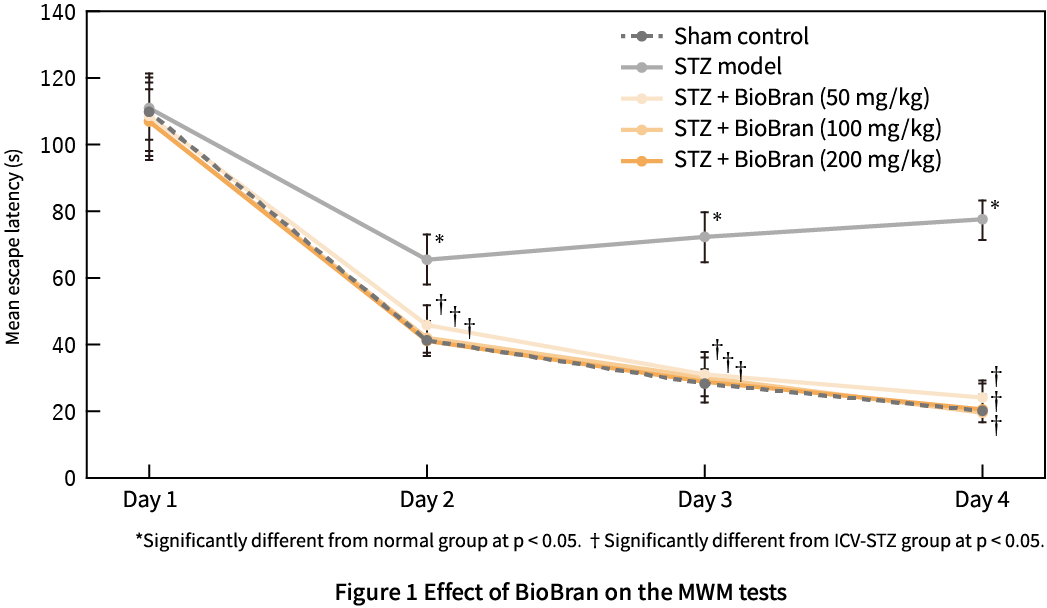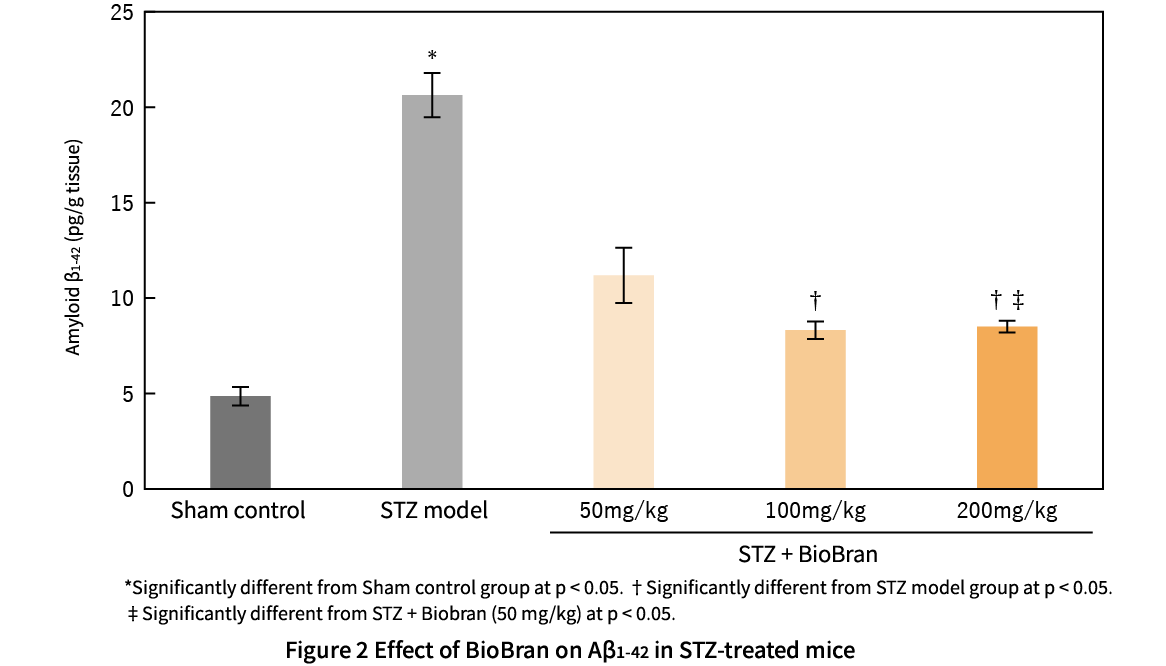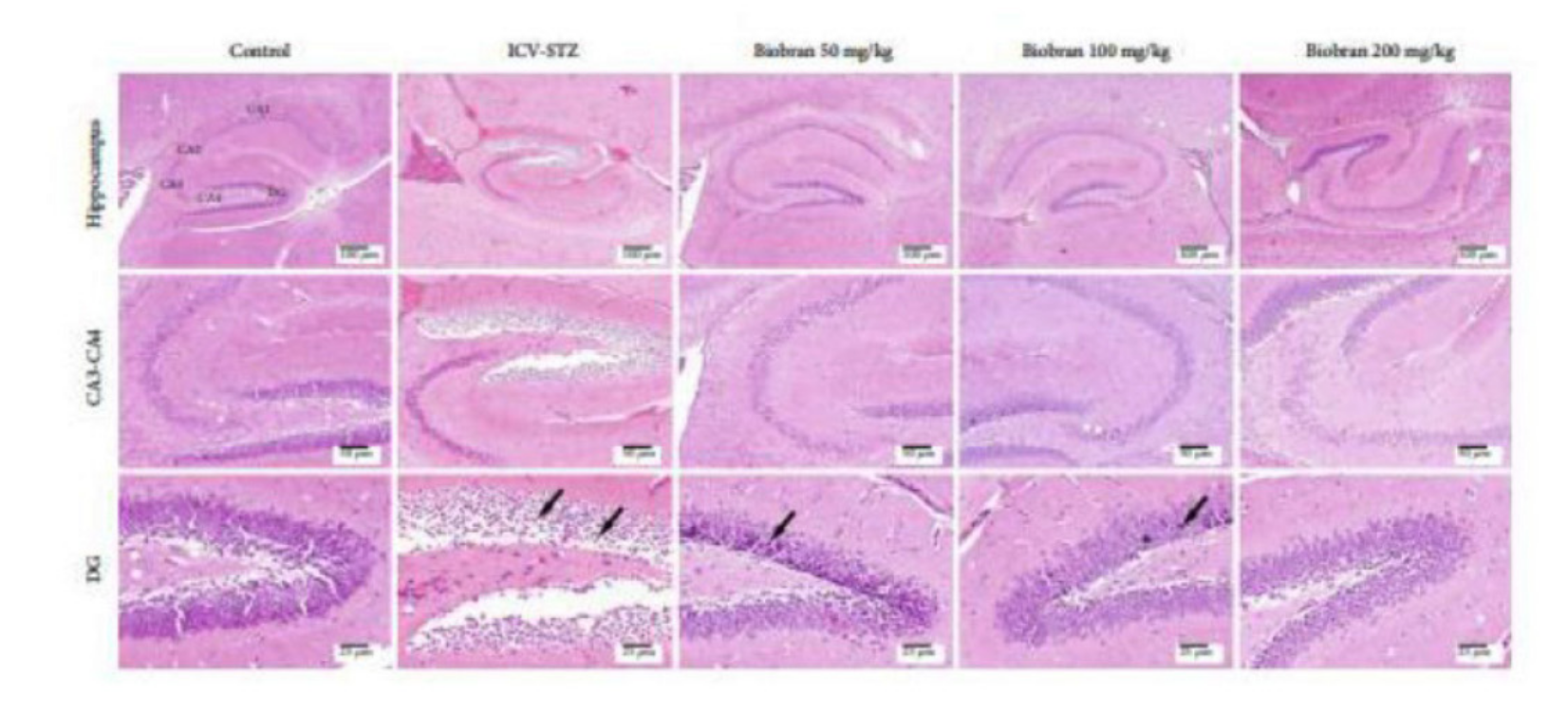Protective effect againt Sporadic Alzheimer’s Disease model
Oxidative Medicine and Cellular Longevity, Volume 2021, Article ID 8845064, 15 pages
Mamdooh Ghoneum and Nesrine El Sayed
In this study, the authors tested the effects of BioBran on a mouse model of sporadic Alzheimer’s disease (SAD).
BioBran was administered intraperitoneally for 21 days to mice in which SAD was induced by injecting streptozotocin. To evaluate the effects on memory and learning ability, various biomarkers were measured and amyloid-β deposition was assessed in addition to the Morris water maze (MWM) test and novel object recognition test.
As a result, BioBran significantly reduced the time lost in the MWM in SAD mice (Figure 1) and amyloid-β levels (Figure 2). In addition, histological examination of the hippocampus showed multifocal haemorrhagic areas with dark degenerated neurons in the CA3, CA4, and DG regions, whereas these were reduced in the BioBran group (Figure 3).
This study also revealed that BioBran increased glutathione expression (increased antioxidant effect) and decreased IL-6 production (anti-inflammatory effect) in SAD mice, as well as decreased intercellular adhesion molecules, promoted apoptosis, and reduced the expression of forkhead box class O proteins.



This figure has been partially modified from the original data for optimal visualization on the website.